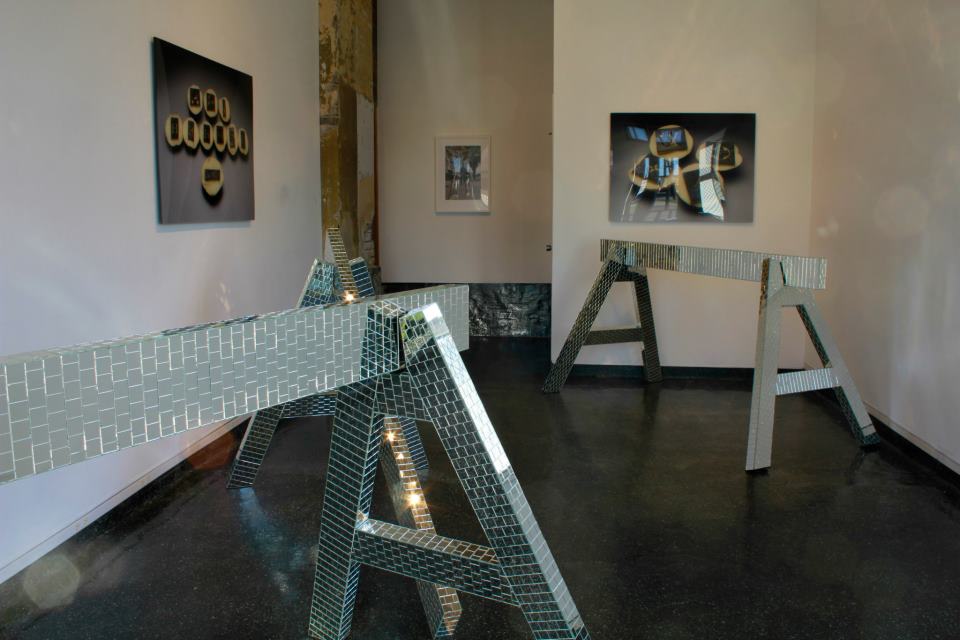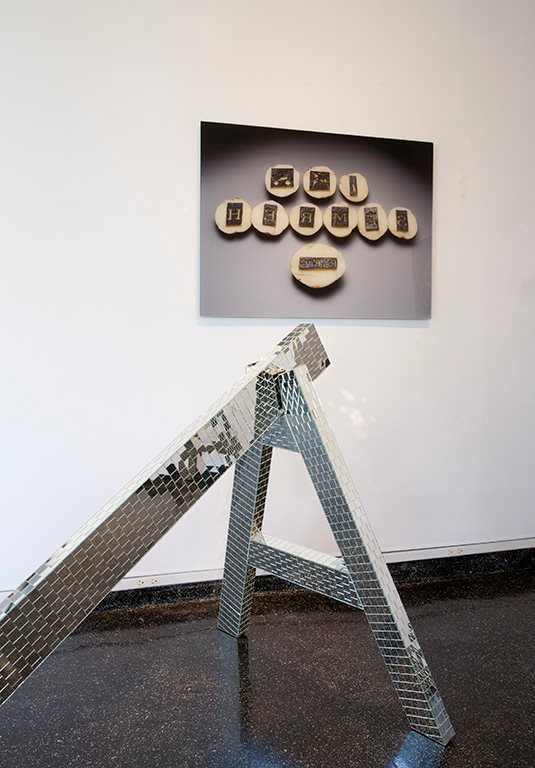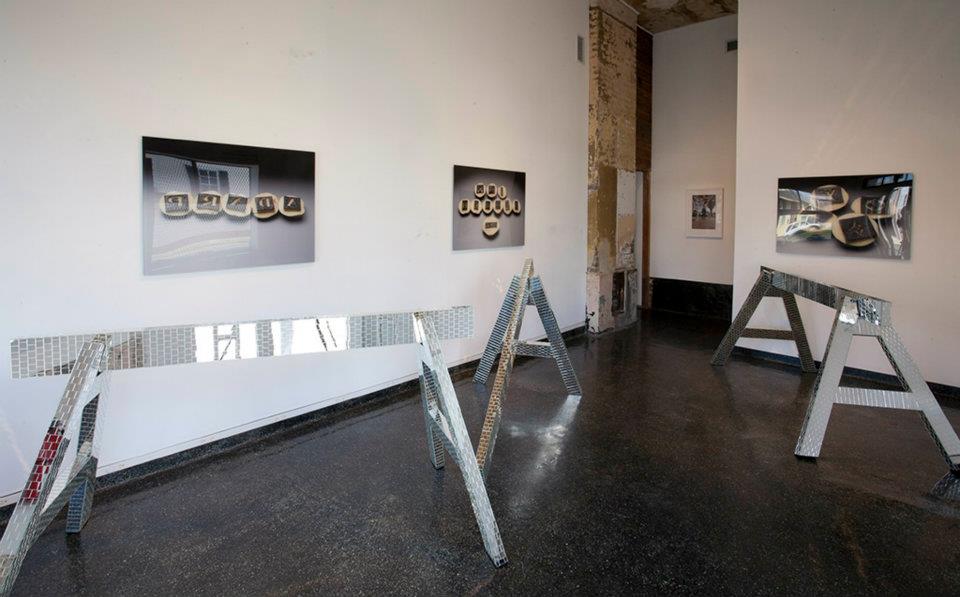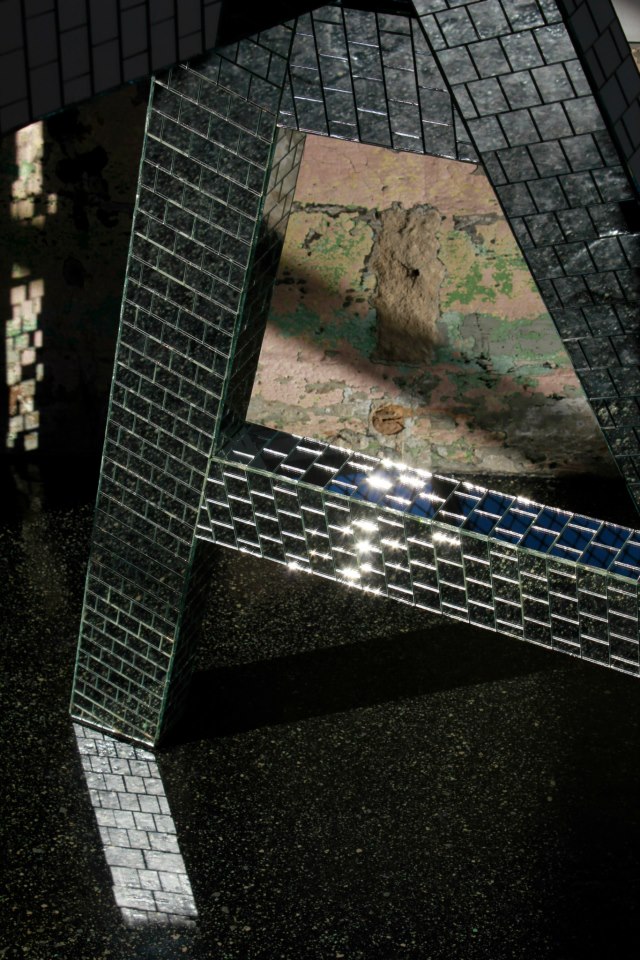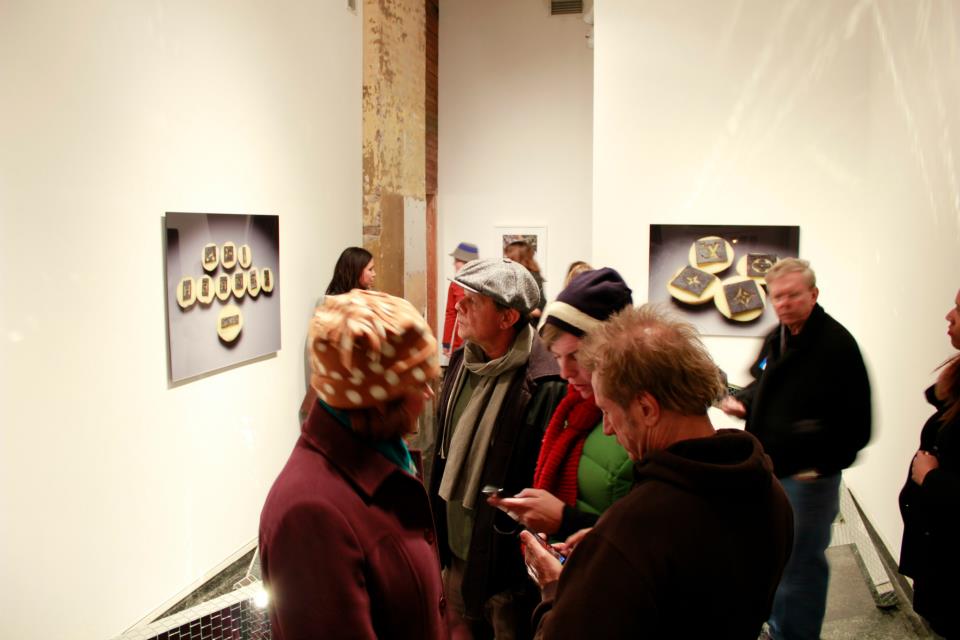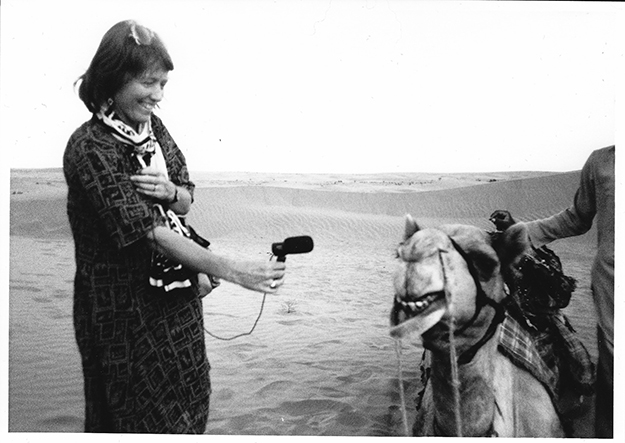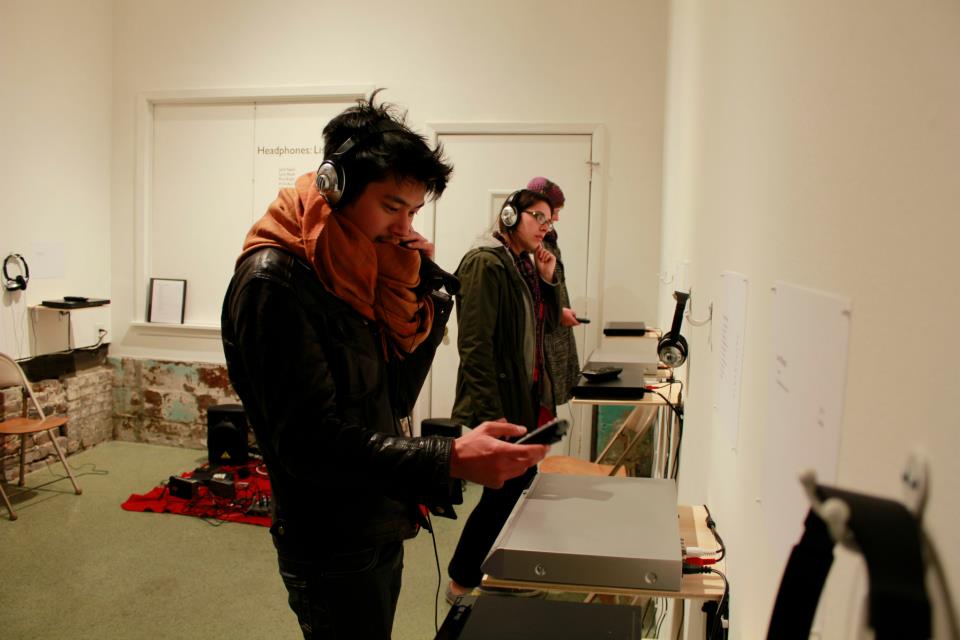February 11- March 4, 2012
February 11th, Opening Night Performance, 7-7:15pm
Philippe Landry
Pastoral Unit, for 4 tapes, harmonium, bells, and vocals
Philippe Landry combines tape music, folk instrumentation, and vocals to blur the line between sound object and song. His work ranges from scores for modern dance to field recordings and found tape cut-ups.
Room 1:
Yumi Janairo Roth
All that Glitters
In All that Glitters, Yumi Janairo Roth presents two projects, a collection of police barriers encrusted in disco mirrors and a series of photographs of designer-label carved potatoes, juxtaposing mundane objects with images of luxury and glamour. By combining contrasting visual languages within the same object, the viewer is asked to reconcile the seeming contradiction between surface and material. Roth’s works function as both natives and interlopers to their environments, simultaneously recognizable and unfamiliar to their users.
Yumi Janairo Roth was born in Eugene, OR and raised in Chicago and suburban Washington DC. She currently lives and works in Boulder, CO where she is a professor of sculpture at the University of Colorado. Yumi has created a diverse body of work that includes discrete objects and site-responsive installations, solo projects as well as collaborations. She received a BA in anthropology from Tufts University, a BFA from the School for the Museum of Fine Arts-Boston and an MFA from the State University of New York-New Paltz and was recently nominated for a Louis Comfort Tiffany Foundation Award. She has exhibited and participated in artist-in-residencies nationally and internationally, including New York (Bronx River Art Center, Sara Meltzer Gallery, Momenta Art, Lower Manhattan Cultural Council, Smack Mellon, Cuchifritos), San Francisco (Limn Gallery), Portland (Institute of Contemporary Art, Map Room) Houston (Lawndale Art Center, DiverseWorks), Boston (New Art Center), Denver (Rule Gallery, Center for Visual Arts, Museum of Contemporary Art), Minneapolis (Soap Factory), Milwaukee (Institute of Visual Arts, Kohler Arts/Industry), Santa Fe (Museum of Fine Arts), Seattle (Consolidated Works), Mexico (Arcaute Arte Contemporaneo, La Galleria RufinoTamayo), the Philippines (Ayala and Vargas Museums), Colombia (Universidad Nacional de Colombia), and Czech Republic (Galerie Klatovy-Klenova, Institute of Art and Design-Pilsen), and Germany (Frankfurt Kunstverein).
yumijroth.com
Room 2:
Headphones: Listen Up!
Valerie Brodar, Curator
Headphones: Listen Up! is an anthology of the art of sound from the first audio recording of the French folk song Au Clair de la Lune by Édouard-Léon Scott de Martinville to work completed yesterday. Sound art has been firmly situated as part of a hybrid visual art practice, which in part focuses on expanding and engaging the non-visual aspects of perception. Like a painting’s rich and varied colors, illusionary space, or nonobjective abstraction audio collage heightens the aural perception of a spatial environment, the color of sound or a sonic sensory experience. Investigating the dimensions of sound through silence, noise, ambient textures, appropriation, geographic soundscapes, indeterminacy, narratives/text, and mashups sonic art encompasses intimate listening experiences, live multi-dimensional performances, sound sculptures and installations. Audio artists have captured the tiniest of sounds such as a tree growing to an ear piercing sonic boom to create complex collages that reflect the world we listen to and tune out. Luigi Russolo, in his seminal text The Art of Noises, proclaims that noise didn’t exist until the industrial era, before that the world was silent. John Cage took this one step further to state “Wherever we are, what we hear is mostly noise. When we ignore it, it disturbs us. When we listen to it we find it fascinating. The sound of a truck at fifty miles per hour. Static between the stations, Rain.”
Like photography before and film after, recorded sound had profound conceptual implications on how art was defined and experienced. The evolution of reproductive modes from wax cylinders to reel-to-reel analog tape, vinyl albums to compact disks and digital code enabled the previously unrecordable to be recorded. Artists captured the ephemeral and continue to invoke the dead. The audio collage is revealed only through the unfolding of time and is simultaneously located and dislocated temporally and spatially. The original can be duplicated enabling the work to transcend boundaries as it can be experienced at the exact same moment in New Orleans, Nairobi, Beijing, and Beirut.
The old adage, often said in jest, ‘you need a (fill in the blank) like you need another hole in your head’ reflects our innate inability to block sound. We close our eyes to not see the monster in the closet, but we don’t have ear lids to not hear it rustling to get out.
Jacki Apple
Lynn Book
Paul Bright
M.W. Burns
Thomas Edison
Philippe Landry
Lou Mallozzi
Filippo Tammaso Marinetti
David Moss
Senga Nengudi
Luigi Russolo
Kurt Schwitters
Edouard-Leon Scott de Martinville
Helen Thorington
David Webber
Hildegard Westerkamp
Gregory Whitehead
Michael Winter
Rooms 3 & 4:
Jill Reynolds
Bitscape
Jill Reynolds creates conceptually-based objects, often with references to science and often incorporating glass, that express ideas about complexity through simple visual images. She graduated from Rutgers University with an MFA in Sculpture and has been a Visiting Artist at the MIT List Visual Art Center, Tacoma Museum of Glass, Rhode Island School of Design, and Pilchuck Glass School, and a Fellow at the Radcliffe Institute for Advanced Study at Harvard. Her work is included in numerous public and private collections including the Museum of Arts and Design in New York, the Seattle Art Museum, the Corning Museum of Glass, the Carnegie Museum of Art, and the Microsoft Corporation. She lives and works in Beacon, NY.



